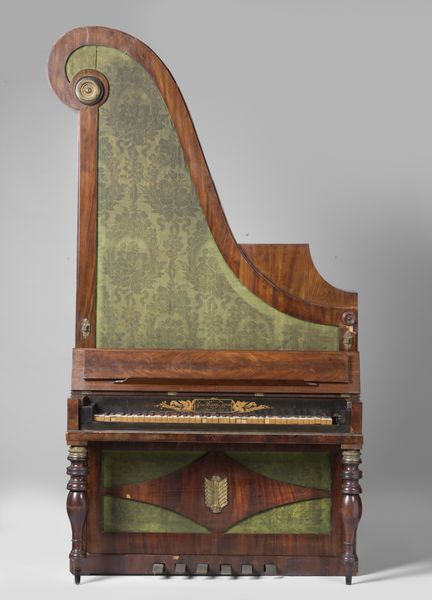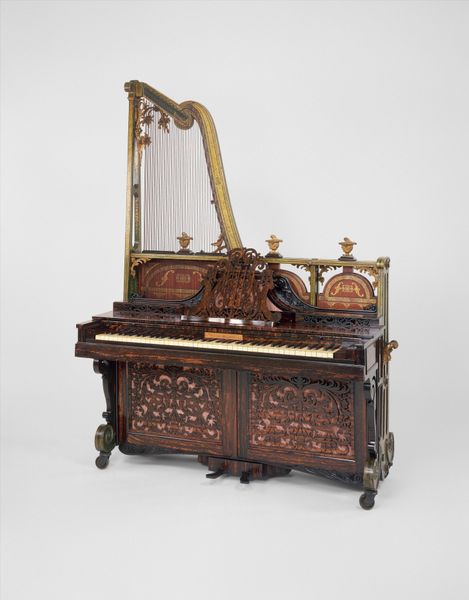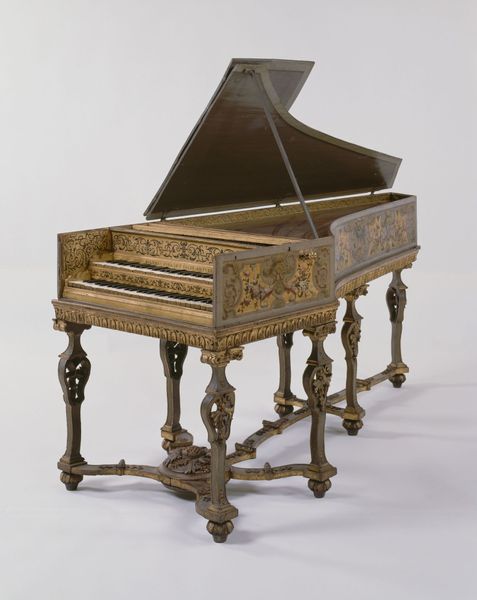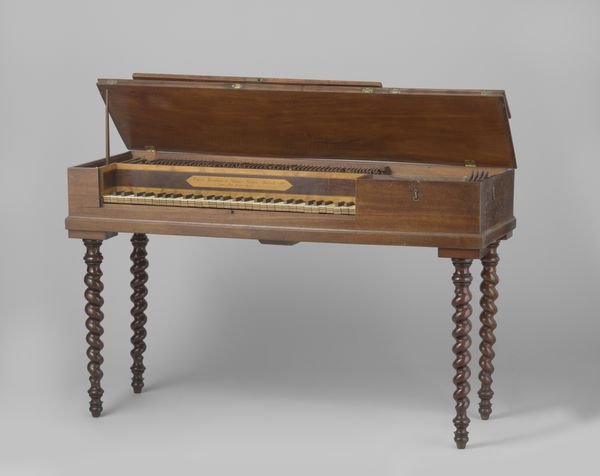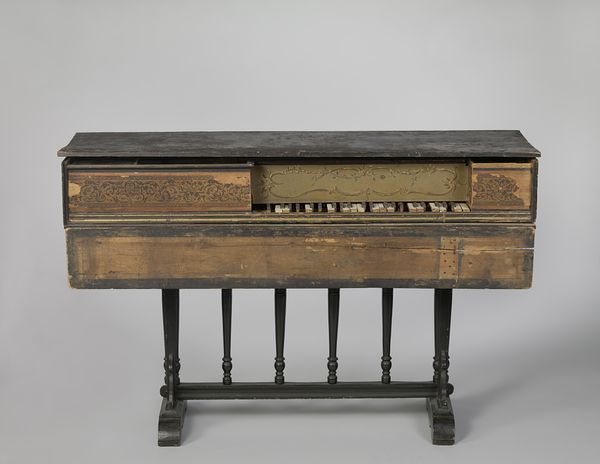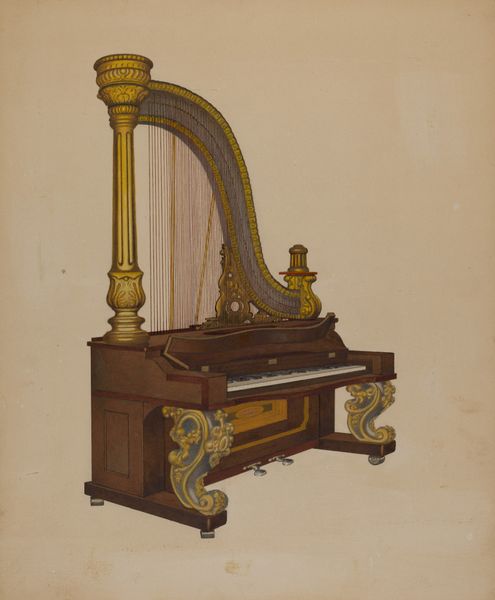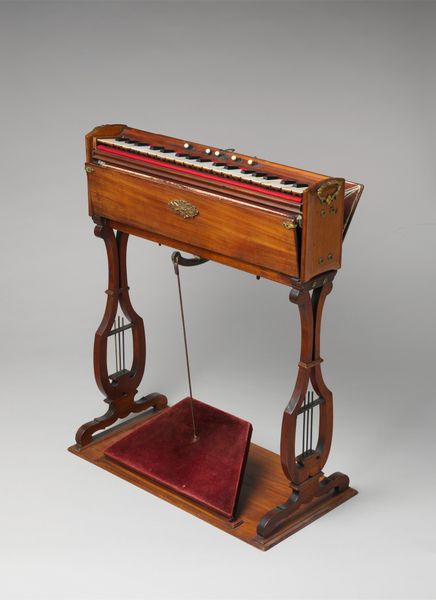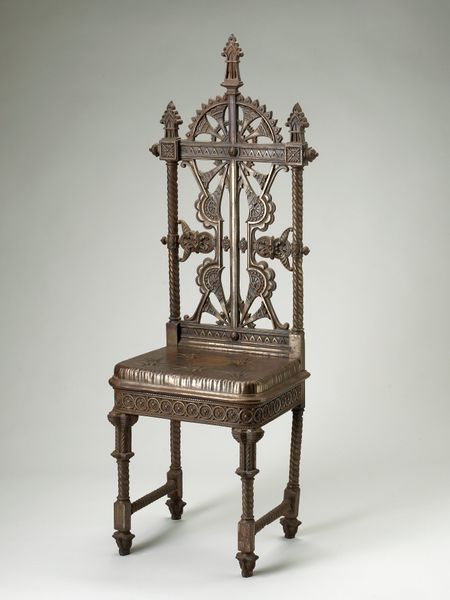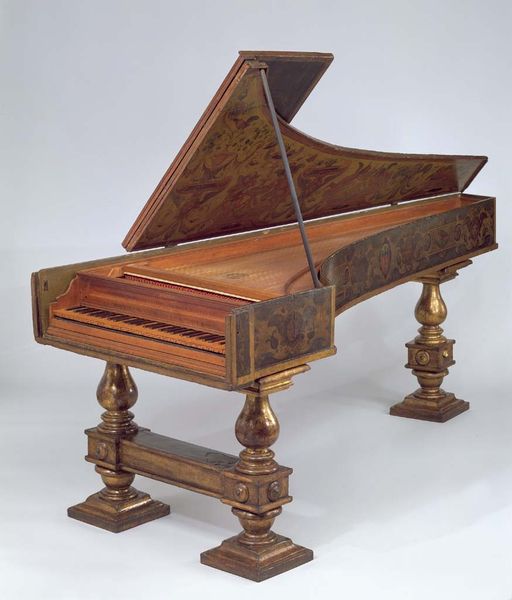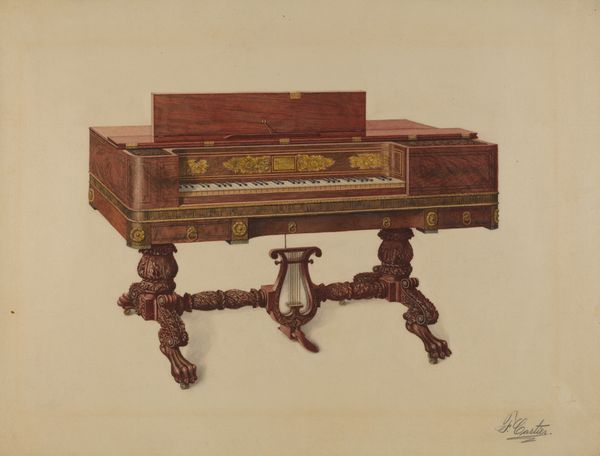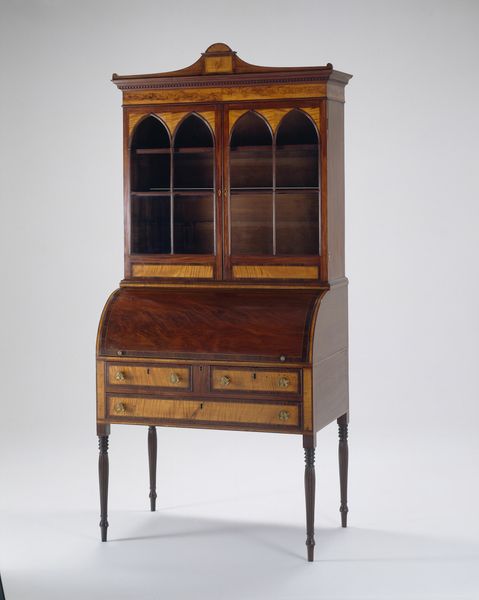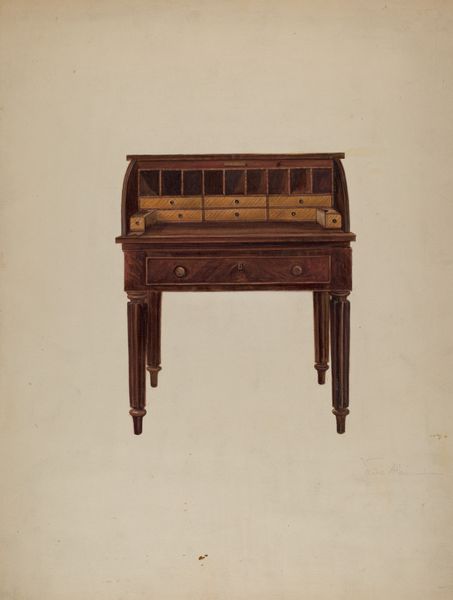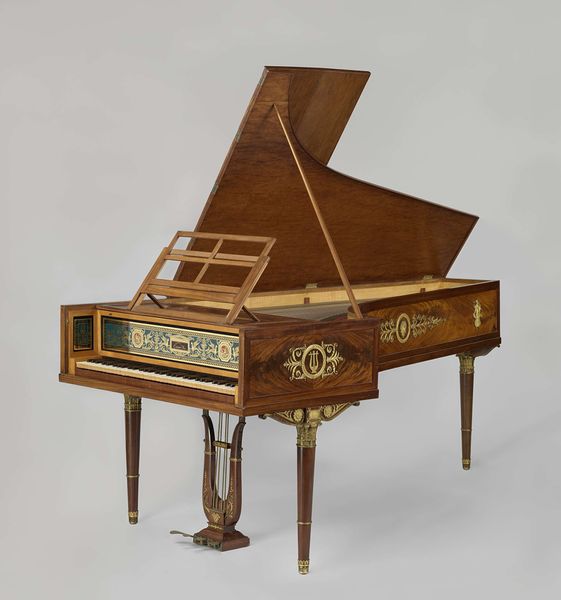
sculpture, wood
#
medieval
#
baroque
#
sculpture
#
sculpture
#
wood
#
decorative-art
Dimensions: height 92 cm, width 69.7 cm, depth 125.5 cm
Copyright: Rijks Museum: Open Domain
Andreas Ruckers made this harpsichord in Antwerp, likely sometime in the early 17th century. It's an instrument of elite culture, for the private enjoyment of music. The Latin inscription "Sic transit gloria mundi" which translates to "Thus passes the glory of the world", serves as a visual reminder of the fleeting nature of earthly achievements. The presence of this phrase on a musical instrument used for entertainment provides an interesting contrast. The decoration and craftsmanship of this instrument speak to the sophisticated tastes of its owner and the cultural values of the time, but of course, an instrument like this would only have been available to a small number of wealthy individuals. Harpsichords like this one are an important piece of cultural history. By researching the account books and correspondence of the Antwerp elite, we can learn much more about the place of music in their lives. The existence of pieces such as this remind us of the importance of cultural institutions in shaping our understanding of the past.
Comments
rijksmuseum about 2 years ago
⋮
This exceptionally small harpsichord sounds a fifth above normal pitch and is the only one of its kind to have survived. The Flemish Ruckers family, perhaps the most famous harpsichord makers of all time, produced instruments richly ornamented with paintings as well as with simpler printed paper decoration, like the one here. The soundboard is painted with floral and bird motifs in tempera.
Join the conversation
Join millions of artists and users on Artera today and experience the ultimate creative platform.
